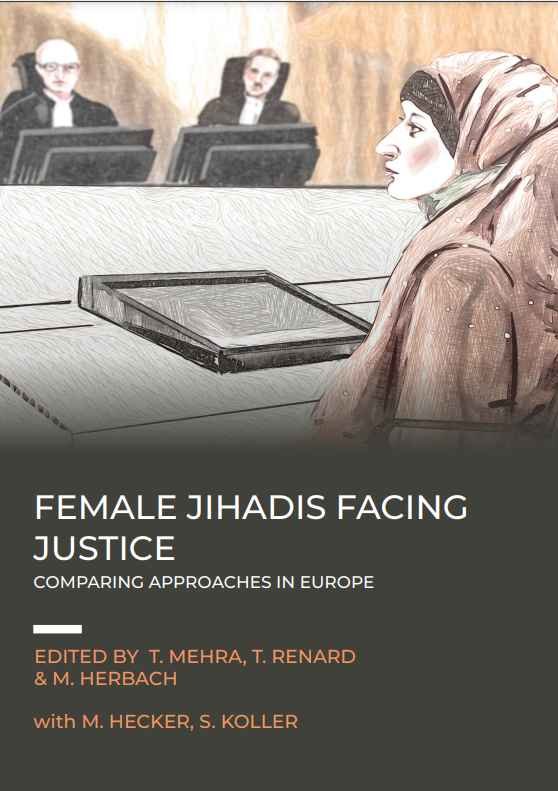Female Jihadis Facing Justice: Comparing Approaches in Europe,
Edited by Tanya Mehra, Thomas Renard and Merlina Herbach with contributions from Marc Hecker and Sofia Koller.
The involvement of women in terrorism is not new, but it has gained more attention with the rise of the Islamic State in Iraq and Syria (ISIS), which attracted many women to its so-called caliphate. Initially perceived as victims or harmless, these women progressively became a growing subject of attention and concern for security services. In 2017, the Dutch intelligence service (AIVD) already indicated that the threat emanating from female jihadis should not be underestimated, while recognising knowledge gaps about the role(s) these women played in jihadi movements or the threat they posed.1 The same year, the United Nations Security Council Resolution 2396 (2017) stressed that women who were affiliated with terrorist organisations “may have served in many different roles, including as supporters, facilitators, or perpetrators of terrorist acts” and urged states to pay special attention to this as women “require special focus when developing tailored prosecution, rehabilitation and reintegration strategies.”2 Yet, in spite of more attention from counter-terrorism services, and a growing body of literature on female terrorists, there is still a considerable lack of data-driven, empirical research on female violent extremist offenders (VEOs). This book seeks to inform practitioners and policy-makers on how to manage female VEOs through the criminal justice system in a rule of law and human rights compliant manner through four case studies in Europe.
The Hague: The International Centre for Counter-Terrorism (ICCT: 2024. 223p.


